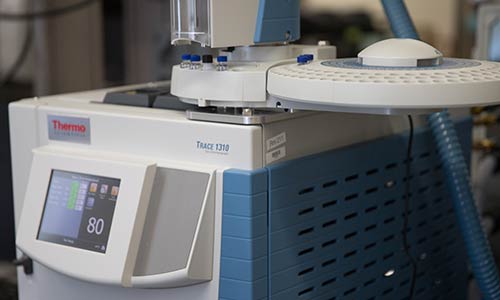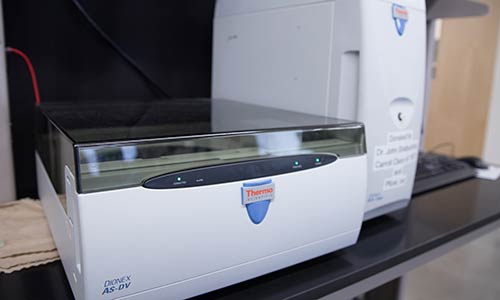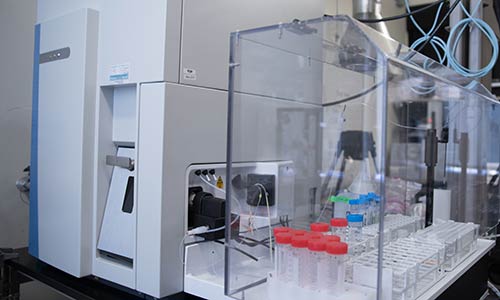 Thermo GC Trace Ultra
Thermo GC Trace Ultra
This instrument is similar to the GCMS, except it has one detector useful for a broad range of organic compounds (Flame Ionization Detector) and a second detector selective for halogenated organics (Electron Capture Detector).
 Thermo IC1100
Thermo IC1100
This ion chromatograph is a liquid chromatography instrument used to separate and quantify anions and cations (positively and negatively charged ions). We use it especially for analysis of natural waters and municipal waters for ions like fluoride, chloride, nitrate, nitrite, phosphate and bromide.
 Thermo iCAP RQ ICP-MS
Thermo iCAP RQ ICP-MS
The ICP-MS (inductively coupled plasma mass spectrometer) can analyze for essentially any element on the periodic table. The argon plasma operates at about 10,000°K, which efficiently atomizes your sample with detection in the part-per-billion range. We commonly analyze environmental and industrial samples.